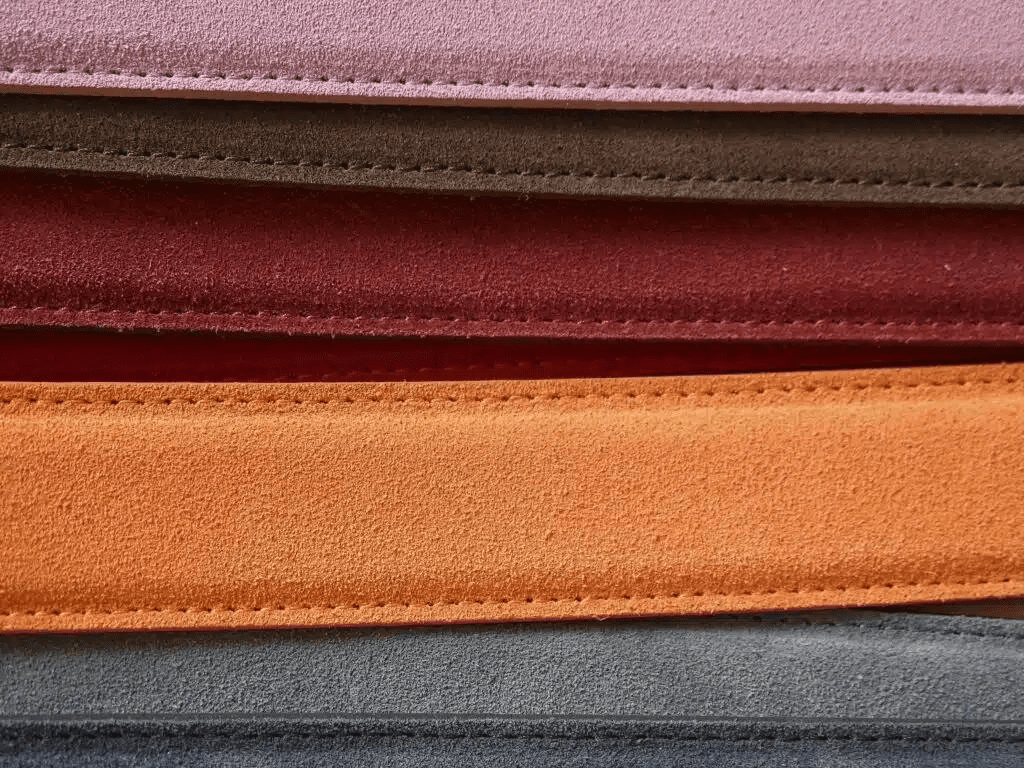Abstract
Vegan leather is also known as faux leather and is considered a very cost-effective alternative to real leather. Vegan leather has improved dramatically in recent years and is now used by many top brands. In this blog you will learn what vegan leather is and how it is made. We also look at the comparison between vegan leather and genuine leather.
What is vegan leather
As the name suggests, vegan leather is primarily made from vegan leather, which is not made from animal skins or animal waste, but from plastic or plants. Vegan leather can be made from plastic and plants.
Instead, it mimics the texture of real leather through artificial or plant-based products. Before we delve into the types of vegan leather, it is important to understand that the term “vegan” in fashion is not synonymous with “sustainable.” It simply refers to the fact that the item is made from plants rather than animals. Vegan leather is divided into three types: synthetic leather, plant-plastic hybrid, and plastic-free leather. Artificial leather or PU leather is made from polyurethane (PU) and polyvinyl chloride (PVC), both of which are derived from fossil fuels. Plant-plastic hybrids combine plant materials with PU, the latter being used to ensure the product is durable and water-resistant. Plastic-free leather is made from cork, rice, natural wood rubber, or coconut waste. For example, Mirum, a company that sells plant-based, plastic-free fashion items, uses natural materials that can be recycled into new products.
Making of vegan leather
Vegan leather can be made from a variety of non-animal materials, such as pineapple, hemp, plant residues, and synthetic materials such as PVC, with different production methods. Let’s take a look at some popular vegan leather-making techniques.
Polyvinyl chloride (PVC) leather: PVC is the cheapest form of vegan leather and is used in inexpensive products. It is made by applying a layer of PVC to any base material or fabric and then covering it with a leather texture to make it look like real leather.
Polyurethane Leather (PU): PU leather is made in the same way by gluing polyurethane, a plastic-based material, to any fabric, giving it the texture of leather.
Vegetable Leather: Pineapple or Piñatex leather is one of the most popular vegetable leathers. It is made from the fibers of pineapple leaves, a waste product of the fruit industry.
Pinatex Peel: Pinatex pineapple peel is 100% vegan, completely eco-friendly and ethical. Made from deforested pineapple trees, Pinatex is a durable plant-based leather that feels similar to animal skin and is waterproof and protective.
Vegan Cork Leather: Made from recycled cork, this material is unique and does not mimic leather or other materials. Although this is an unconventional technique, it’s included here because of the stunning colors it inspires.
Mushroom Leather: More and more people are choosing portobello patties over hamburgers and replacing beef leather with eco-friendly mushroom leather. This plant-based regenerated leather can be expanded into any desired shape and size and is biodegradable.
Leaf Leather: Made from ethically harvested teak leaves, woven and sealed with fabric, it retains the inherent beauty of nature. This unique and completely eco-friendly leather alternative is perfect for those still looking for their favorite vegan leather. Using a traditional Asian method for waterproofing furniture and roofs, it can make everything from large bags to handmade leaf leather wallets.
GRAINED ELECTRICAL: This Italian grain vegan leather uses bio-polyester oil to provide a classic leather look without ethical concerns. This plant-based leather contains less water and works better than animal leather, making it a better alternative to other vegan leather products.

Recycled Bottles: Amazingly, recycled plastic bottles are being used to create an eco-friendly and sustainable vegan leather look that is both stylish and good for the environment. By breaking down waterproof and lightweight polyester fibers into plastic pieces, a 100% recycled plastic skin can be made.
Cactus Leather: The latest eco-friendly leather alternative is made from the leaves of the nopal cactus, providing an attractive, completely sustainable faux leather. This highly adaptable material is notable for its softness, suitable for furnishings, and durability, perfect for creating reliable handbags.
The horrors of real leather
In order to wear animal skins, the animal must first be skinned. In order to understand why we need to look for alternatives, it is important to understand that getting animal fur is a dream. Captured animals are treated as purebreds, stuffed into overcrowded areas, and subjected to various forms of torture. What’s worse, the wounds caused by this have no pain medication.
Due to the lack of supervision and control, the farm environment is already deadly for the animals. Under Florida law, it is legal to house 350 six-foot alligators in a typical single-family home. “90% of farm animal injuries are directly related to the harsh nature of their environment,” explains reptile biologist Dr. Clifford Warwick. Due to poor living conditions, animals develop deformities that worsen the pain of their death. “Exotic” crocodiles and alligators are brutally hunted for their meat. The latter are beaten almost to death with axes, sometimes they even cut off their heads. After multiple blows to the head, they are paralyzed and spend hours in pain as they wait for the flesh to be torn from their bodies.
Indeed, animal skin is natural but the chemicals immersed in it during tanning are not. In the same 2023 report mentioned previously, it was found that 170 chemicals used for tanning leather could harm soil and animals, worsen air pollution, and generate loads of wastes, including hazardous ones. With the involvement of lead, cyanide, and formaldehyde comes an excessive amount of chemicals that is toxic enough to kill people near the tanneries. According to the World Health Organisation (WHO), about 90% of those who reside near Bangladesh’s hazardous tanneries are found to die before the age of 50. Furthermore, research shows that tannery workers in Italy and Sweden are 20% to 50% more likely to have cancer. The production of genuine leather has created a long list of adverse effects, which has paved the way for the introduction of another type of leather: vegan leather.
Instead, it mimics the texture of real leather through artificial or plant-based products. Before we delve into the types of vegan leather, it is important to understand that the term “vegan” in fashion is not synonymous with “sustainable.” It simply refers to the fact that the item is made from plants rather than animals. Vegan leather is divided into three types: synthetic leather, plant-plastic hybrid, and plastic-free leather. Artificial leather or PU leather is made from polyurethane (PU) and polyvinyl chloride (PVC), both of which are derived from fossil fuels. Plant-plastic hybrids combine plant materials with PU, the latter being used to ensure the product is durable and water-resistant. Plastic-free leather is made from cork, rice, natural wood rubber, or coconut waste. For example, Mirum, a company that sells plant-based, plastic-free fashion items, uses natural materials that can be recycled into new products.
Conclusion
Fashion-conscious companies are constantly inventing, using and investing in innovative, eco-friendly alternatives made from vegan leather. Being environmentally conscious has never been so easy and fun. To avoid falling victim to greenwashing, consumers need to read the fine print carefully and understand the complexities involved. Brands need to do thorough research on alternative materials and be aware of the negative impacts of plastic-based products. Choosing between genuine leather and vegan leather is not an easy decision for brands or consumers alike.

